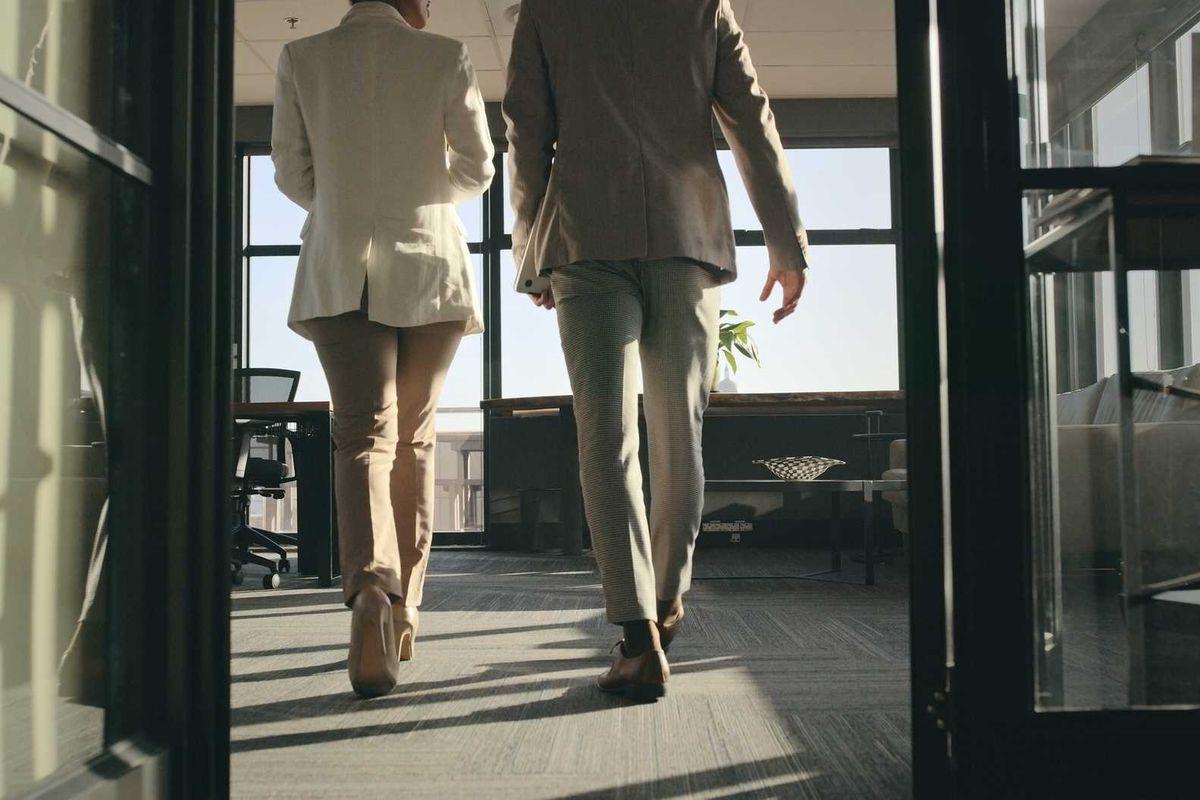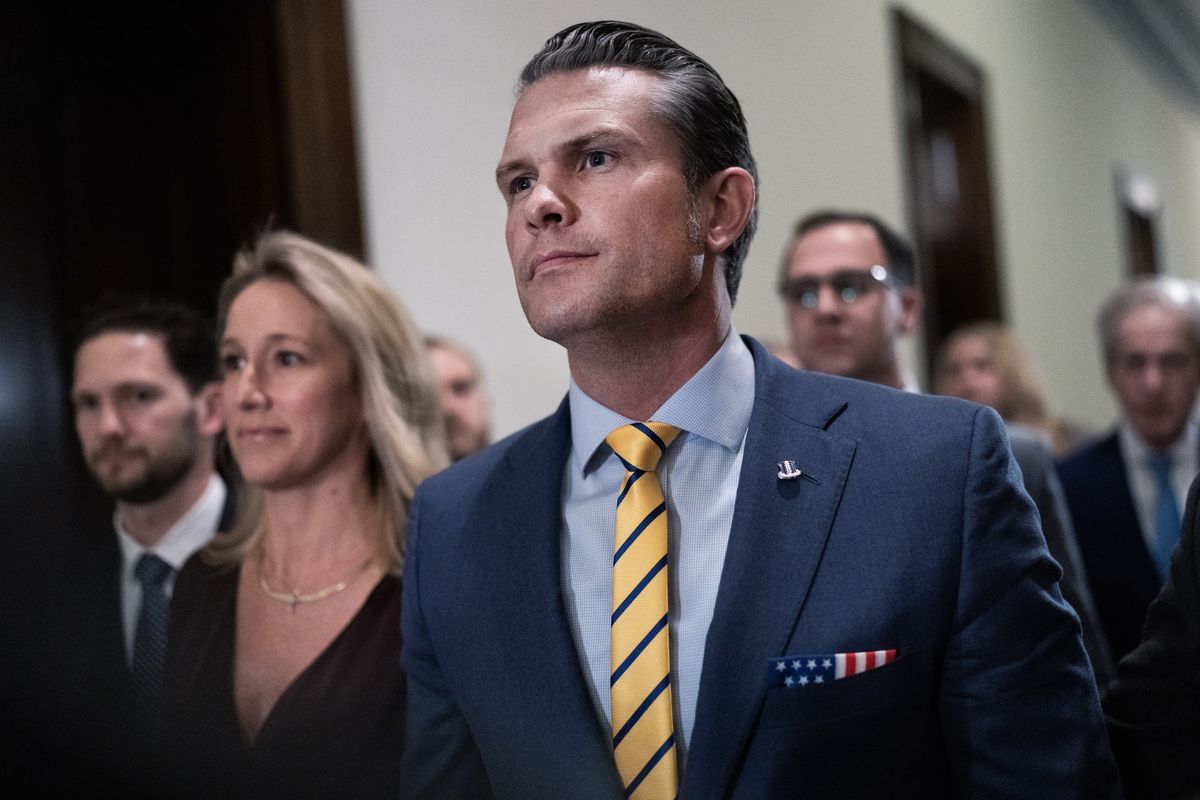LOS ANGELES, CA - California National Guard troops began to arrive in Los Angeles Sunday on the orders of President Donald Trump despite the state's governor's objections, where protests led to clashes between immigration authorities and demonstrators.
Governor Gavin Newsom sharply criticized the move as inflammatory and unnecessary. "The federal government is sowing chaos so they can have an excuse to escalate. That is not the way any civilized country behaves.
Newsom urged protesters to remain calm. "Don’t give Trump what he wants," Newsom wrote on social media.
“We’ll send whatever we need to make sure there’s law and order,” Trump said about sending troops to Los Angeles. “Last night (Saturday) in Los Angeles, we watched it very closely; there was a lot of violence there, and it could have got much worse.”
The unrest began on Friday when law enforcement officials in full riot gear arrived in Los Angeles to detain day laborers at a building supply shop. This operation was part of a broader enforcement initiative by the Trump administration aimed at addressing issues related to undocumented immigration.
So, when can a president deploy the National Guard? Here is the answer and more in the latest edition of Just the Facts:
The President can deploy the National Guard directly under the Insurrection Act, but only in specified situations.
The Insurrection Act of 1807 allows the President to federalize the National Guard and deploy it on US soil when:
- The US is invaded or in danger of invasion
- There is a rebellion or danger of rebellion against the US government
- The President is unable to execute the laws of the United States with regular forces.
Did Trump invoke the Insurrection Act?
In response to the outbreak of protests in Los Angeles, President Trump did not invoke the Insurrection Act but instead referenced a specific provision of the U.S. Code on Armed Services, which allows for the federal command of National Guard troops in the event of "a rebellion or danger of a rebellion against the authority" of the United States.
However, the law also stipulates that such orders should be issued through the governors of the states, raising questions about Trump's legal authority to bypass Governor Newsom.
Examples of National Guard deployments by presidents
- 1965: President Lyndon B. Johnson deployed the National Guard to Alabama to protect civil rights demonstrators.
- 1968: The Martin Luther King Jr. Assassination Riots prompted the federalization of the National Guard in several cities.
- 1970: The New York Postal Strike led to the deployment of the National Guard to assist with postal operations.
- 1992: President George H.W. Bush deployed the National Guard to Los Angeles after riots following the acquittal of police officers in the Rodney King beating case.
- 2020: In the wake of protests following the killing of George Floyd, National Guard troops were deployed in some states.
Calls for reform
In 2022, the Brennan Center for Justice submitted a proposal to the House committee investigating the January 6 Capitol attack, advocating for reforms to the Insurrection Act. The aim of these reforms is to clarify ambiguous language and update the Act to address contemporary issues.
The Brennan Center identified specific sections that require clarification, including the criteria under which the President can invoke the Act, which states that "any insurrection, domestic violence, unlawful combination, or conspiracy" is acceptable grounds.
The Center contends that this language is overly broad and could be interpreted in a way that allows the President to use the Act to respond to various forms of conspiracy, including protests or minor criminal acts, with active-duty military forces.
Hugo Balta is the executive editor of the Fulcrum. He is the publisher of the Latino News Network and an accredited Solutions Journalism and Complicating the Narratives trainer with the Solutions Journalism Network.






















 Protest signs and resource information posters were hung up around a resource tent in Broadview, Illinois. Credit: Britton Struthers-Lugo, Oct. 30, 2025.
Protest signs and resource information posters were hung up around a resource tent in Broadview, Illinois. Credit: Britton Struthers-Lugo, Oct. 30, 2025. Rubber bullet wounds on Bryan’s back, after a day of protesting at the Broadview ICE facility in mid-September. He wears hospital scrubs, acquired after receiving medical attention following the pepper-spray incident earlier in the day. He returned to protest after being discharged from the hospital.Credit: Adriano Kalin (@adriano_kalin).
Rubber bullet wounds on Bryan’s back, after a day of protesting at the Broadview ICE facility in mid-September. He wears hospital scrubs, acquired after receiving medical attention following the pepper-spray incident earlier in the day. He returned to protest after being discharged from the hospital.Credit: Adriano Kalin (@adriano_kalin). ICE officers gathered outside the Broadview detention center. Yellow identifying badges can be seen on the front of their uniforms and on their shoulders. Credit: Britton Struthers-Lugo, Oct. 30, 2025.
ICE officers gathered outside the Broadview detention center. Yellow identifying badges can be seen on the front of their uniforms and on their shoulders. Credit: Britton Struthers-Lugo, Oct. 30, 2025. Screengrab from the Chicago Council of Lawyers. Designed by
Screengrab from the Chicago Council of Lawyers. Designed by  A white bus waits outside the Broadview Detention Center to transport detainees to a permanent detention center or to an airport. The Broadview Detention Center cannot hold detainees for longer than 12 hours, though to reflect increased enforcement operations this has been increased to 72 hours. Longer stays have been recorded since Operation Midway Blitz. Credit: By Britton Struthers-Lugo, Oct. 30, 2025.
A white bus waits outside the Broadview Detention Center to transport detainees to a permanent detention center or to an airport. The Broadview Detention Center cannot hold detainees for longer than 12 hours, though to reflect increased enforcement operations this has been increased to 72 hours. Longer stays have been recorded since Operation Midway Blitz. Credit: By Britton Struthers-Lugo, Oct. 30, 2025. A paper outlining resources and ways to report federal law enforcement activity around Chicago hangs on a gate in the protestor “free speech zone”.Credit: Britton Struthers-Lugo. Oct. 30, 2025.
A paper outlining resources and ways to report federal law enforcement activity around Chicago hangs on a gate in the protestor “free speech zone”.Credit: Britton Struthers-Lugo. Oct. 30, 2025.
